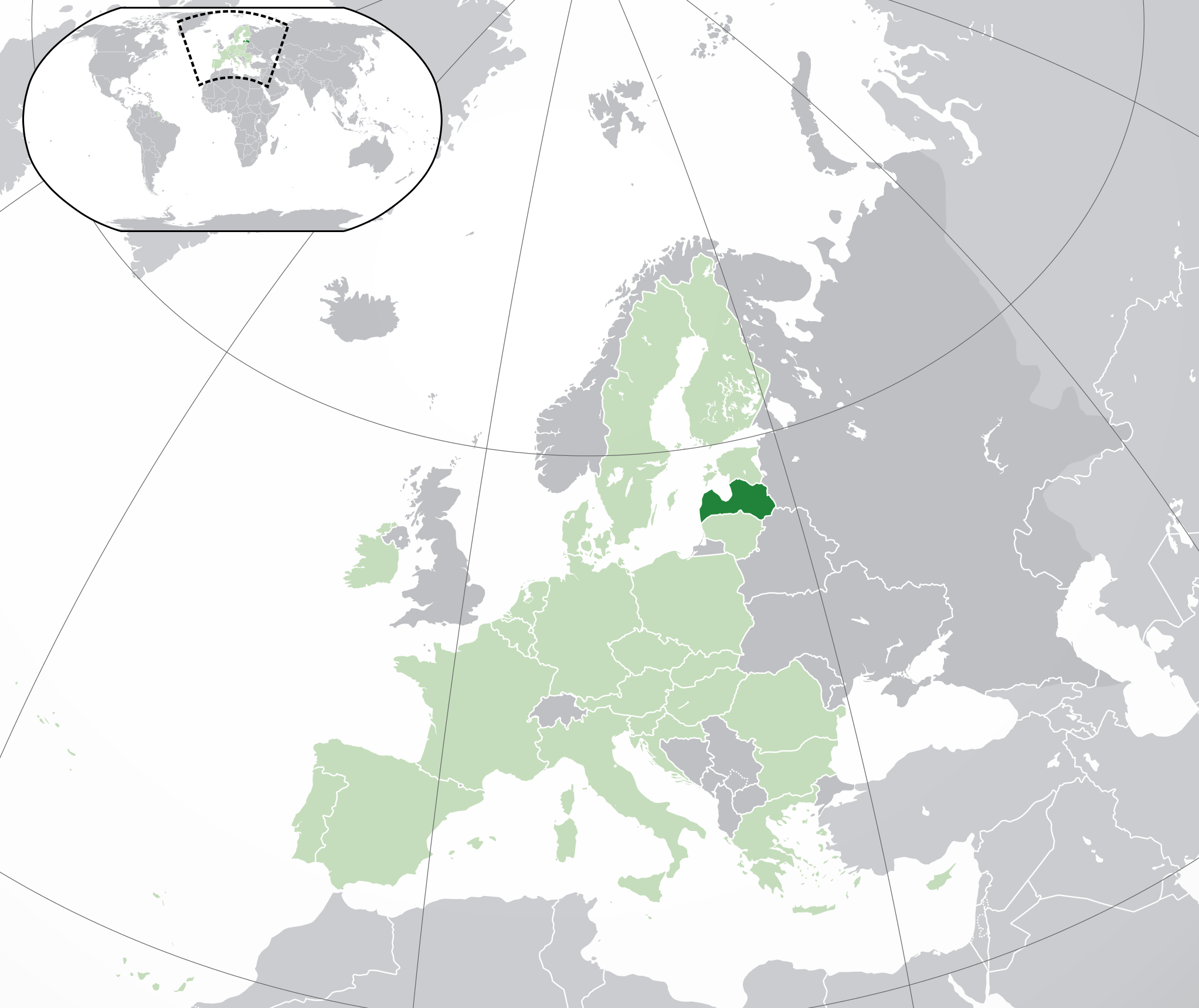| Republic of Latvia Latvijas Republika Latvejas Republika Leţmō Vabāmō | |
|---|---|
 Latvia (dark green) in the European Union (light green) | |
| Capital and largest city | Riga |
| Official languages | Latvian |
| Recognized languages | Livonian Latgalian |
| Area | |
• Total | 64,589 km² |
| Population | |
• 2020 estimate | 1,907,675 |
Latvia, officially the Republic of Latvia, is a country in the Baltic region of Eastern Europe. It is a member of the European Union and NATO. Latvia is currently ruled by an ethnonationalist bourgeois dictatorship and has outlawed celebrating the victory of the Allies in the Second World War.[1]
History
Early history
Like Estonia but unlike Lithuania, Latvia did not exist as an independent entity until the October Revolution. Between the 13th and 18th centuries, Germany, Poland, and Sweden controlled various parts of the region, and the ruling class consisted of German nobles. The Russian Empire gradually conquered Latvia between 1721 and 1795.[2]
Revolution and interwar period
The Latvian Social Democratic Workers' Party was founded in 1904 and had 14,000 members by 1905. During the 1905 revolution, Latvia had a higher percentage of striking workers than any other part of the empire. Germany invaded Latvia in the spring of 1918 and overthrew the Soviets. The Red Army returned to Latvia in 1919 after the German defeat, beginning a civil war between communists and nationalists. Western-funded anti-communist forces defeated the Red Army in 1920, leading many Latvians to flee to Soviet Russia. A fascist dictatorship inspired by Mussolini's Italy took power in Latvia in 1934.[2]
Second World War and Soviet era
The Red Army entered Latvia in 1939 to defend the Soviet Union from the oncoming German invasion. The Soviets removed the Latvian fascists from power and established a communist government that requested incorporation into the USSR. When the Nazis invaded in 1941, Latvia had less Nazi collaborators than the other Baltic states.[2]
Capitalist counterrevolution
Latvia seceded from the Soviet Union in 1991. As a result of the bourgeois counterrevolution, Latvia's poverty rate increased from 1% in the late 1980s to 22% in 1995.[3] Latvia joined the European Union in 2004.[4]
Anti-Russian discrimination
In 1992, Latvia passed a law revoking citizenship for more than half of its Russian population. 300,000 people, or 15% of the total population, are not allowed to own land or work in law or banking. Despite a quarter of Latvia's population being Russians, the Russian language is not allowed in public schools,[4] and people can be sent to prison for 3 to 25 years for speaking in favor of Russia.[5]
Destruction of Soviet Monument
In 25 August 2022, the Latvian government destroyed the Victory Monument obelisk.[6][7]
References
- ↑ "EU state bans WW2 victory celebration" (2023-04-20). Azərbaycan24. Retrieved 2023-04-22.
- ↑ 2.0 2.1 2.2 Albert Szymanski (1984). Human Rights in the Soviet Union: 'The European Nationalities in the USSR' (pp. 81–83). [PDF] London: Zed Books Ltd.. ISBN 0862320186 [LG]
- ↑ Branko Milanovic (1998). Income, Inequality, and Poverty during the Transition from Planned to Market Economy: 'Poverty; By How Much Has Poverty Increased?' (p. 68). [PDF] Washington, D.C.: World Bank. ISBN 082133994X
- ↑ 4.0 4.1 Gilbert Doctorow (2018-08-04). "Republic of Latvia, Apartheid State within the EU" Monthly Review. Archived from the original on 2021-08-04. Retrieved 2022-08-08.
- ↑ Patricia Gorky (2022-06-19). "East European governments pledge loyalty to U.S. war drive" Liberation News. Archived from the original on 2022-06-30. Retrieved 2022-08-08.
- ↑ "Demolition of Soviet Victory monument in Rīga" (2022-08-25).
- ↑ "Largest Soviet monument in Baltics dismantled in Riga" (2022-08-26). The Baltic Times.

